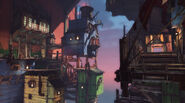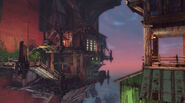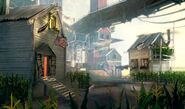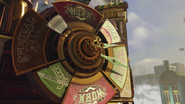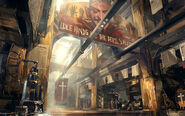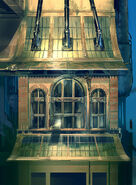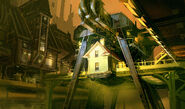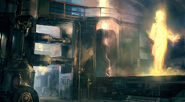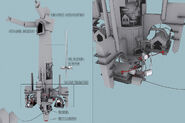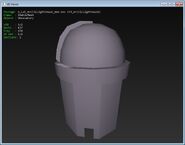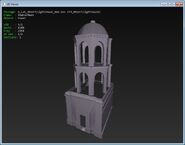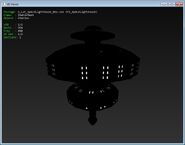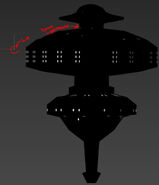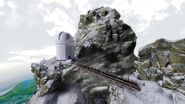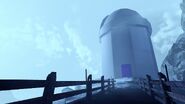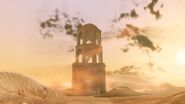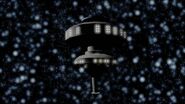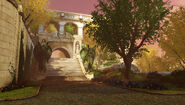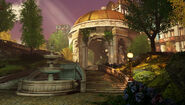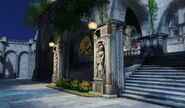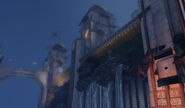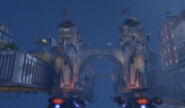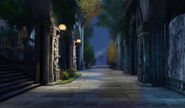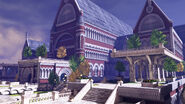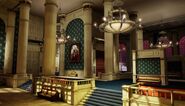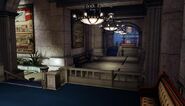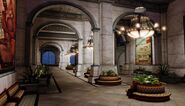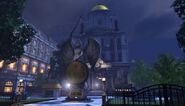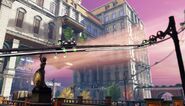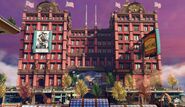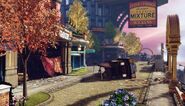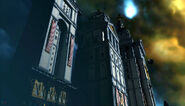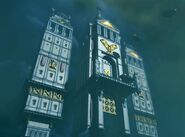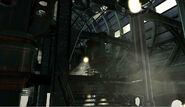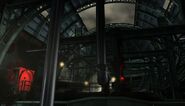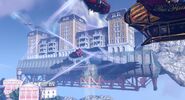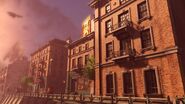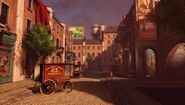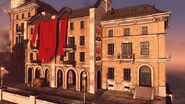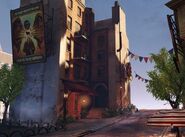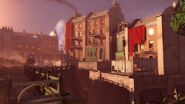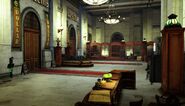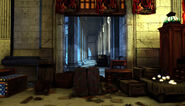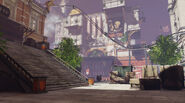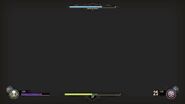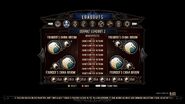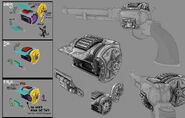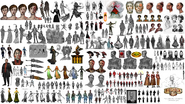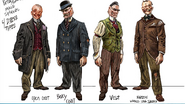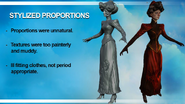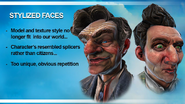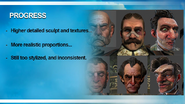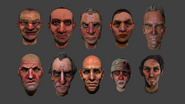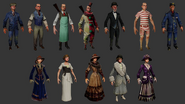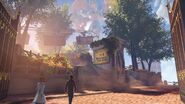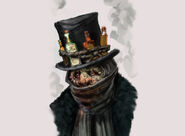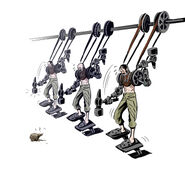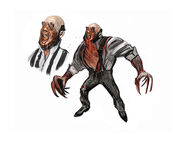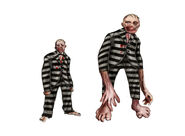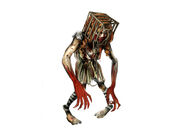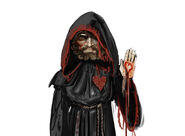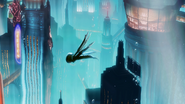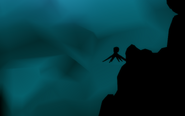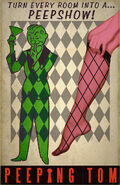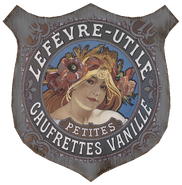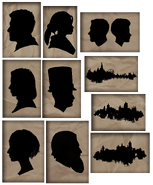This page is under construction. Please check back later. This message was added 14:45, January 10, 2015 (UTC).
|

|
"Come on in and show us those snappy snappies." - Peach Wilkins
This article could use some more pictures. Would you kindly help BioShock Wiki by adding some?
|

|
"...if you're going to do such things, at least you should
do them properly." - Brigid Tenenbaum This article, BioShock Infinite Removed Content , or a section of this article may require overall cleanup.
|
BioShock Infinite went through many revisions over the course of its development by 2K Games and Irrational Games. The purpose of this article is to record all content which appears in game files, development trailers, or concept art, but ultimately did not make it to the final version of the game.
As the following elements were removed or left unused in the final version of the game, they should not be considered canon to the game's history, nor actual parts of its universe.
Before Columbia
At the start of development for what would become BioShock Infinite the setting for the game was to be a familiar place, the underwater city of Rapture. Despite being set in Rapture, the team didn’t want to repeat what had been done in BioShock and the story would place before the Civil War ravaged the city. As work progressed it was decided that seeing the Rapture Civil War occur would destroy the mystery of the conflict and that it was best to leave it a mystery. While there was still to be a connection to Rapture in some way, it was decided that the game would take place in a new city. For a time the Renaissance was considered, but with the announcement of Assassin's Creed II which took place in that same time period, it was decided that a different setting was needed.[1] Finally a choice would be made and the new city would be set in the sky.[2]
"City in the Sky"
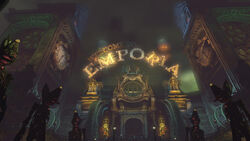
In the early "City in the Sky" or "Rapture in the Sky" prototype for Columbia, featured in both screenshots in The Art of BioShock Infinite and IGN's Early Elizabeth video, it was considered to have an Art Nouveau inspiration to its architecture, along with a more weathery and stormy atmosphere to create cloud cover. One of the current game's areas that appeared predominant throughout development was Emporia, only with automata-based statues, and buildings inside Rapture-like corridors with glass ceilings.
It was mentioned in the BioShock comparison interview that this was meant as an art contrast from BioShock's Rapture, since Rapture was focused with Art Deco.[3] However, it was found that while Art Deco architecture had simple shapes with low polygon counts, making it easy to generate in the game's engine, the Art Nouveau style was too complex, with very fine tuned round designs which used more polygons -- more than they could afford in their rendering budget. This caused them to revise it for the current Beaux-like appearance. Still, some Art Nouveau assets do appear in the game, such as furniture, and decorative frames and signs in Emporia, Comstock House and the Church of Comstock.
As for the stormy weather atmosphere, they found it was too dark, and the lighting resembled Rapture too much, with no emphasis on the environments as being an open sky. It was revised into a clearer and brighter environment.
Columbia's Setting and Society
Columbia went through significant changes throughout its development, all surrounding the common theme of American exceptionalism and the issues of class and race in the early twentieth century.
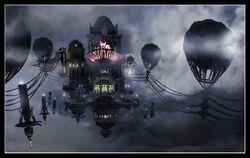
Columbia started out very different, most differences listed in the City in the Sky section above. An early idea for the conflict in Columbia was also Luddites versus pro-technology.[6] Very early concept art even had an image of a Cabaret, something that would definitely would have been out of place in the Columbia of the game.
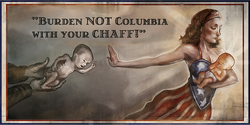
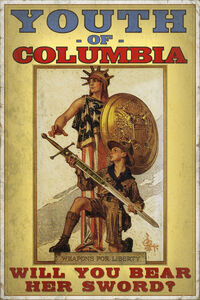
Columbia's patriotism, as seen in the early trailers and promotional posters, was originally supposed to be more politically and socially based rather than religious, with Comstock being an aged politician rather than a prophet. The state was also supposed to be fascist and Nazist influenced, with a Hitler Youth like program for the young (who appear similar to Boy Scouts in uniform; "Youth of Columbia, Will You Bear Her Sword?") and racial purity was emphasized as a reason for their racism ("We must all be vigilant to ensure the purity of our people!"). Columbia was militaristic, encouraging duty to protect Columbia against all of Columbia's "enemies", described as foreigners and anarchists ("Patriots! Arm Thyself Against the Foreigners & Anarchists! Protect Columbia!"; "Columbia Calls You!…to the ramparts, Patriots all!"). Columbia was also to have revered Abraham Lincoln as well as figures such as George Washington, with early trailer showing a good amount of Lincoln-related merchandise in stores such as Major's Notions, Sundries and Novelties. Religious devotion was apparently present but on a much more radical Christian level, more similar to the United States of the period. Columbia was also to sport, from time to time, actual American flags rather than their own; evidenced by early Motorized Patriots (and those who appear through Tears in-game) to have the traditional stars and stripes.
Columbia itself was also to be less connected, made up of many different connecting platforms, seen in several trailers and the TV spot. The buildings and platforms were also to be organized into clusters, and the Sky-Line was to also pass through these clusters (the Sky-Lines in-game mostly start at the edges of platforms and connect areas farther away from each other and the routes are much longer).
The supernatural aspect of the game was also to be more mystical rather than scientific. As mentioned below, the merged were a result of people being exposed to alternate versions of themselves, and overuse Vigors were also to be detrimental to health and appearance much like ADAM is to Splicers ("Vigor Junkies"). Elizabeth's powers were also to be more diverse and supernatural, and tears were to have a much greater impact on gameplay and story. The Siren was based on early 20th century mysticism and the culture of mediums, and possibly wouldn't have been limited to just Lady Comstock. The TV spot also shows Columbia was to be, based on its extreme Christian beliefs, suspicious of the supernatural, to the point where a Preacher testifies against Elizabeth as a crowd is about to lynch her by hanging, probably due to her powers. This same kind of suspicion probably would have carried over to the main game.
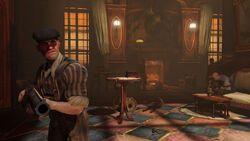
Citizens would also have had a greater impact on the game, appearing in much greater numbers and even could attack the player, both Founders and Vox alike. Citizens were to have been much more varied in ability, using nearly everything at the same frequency the player could, including sky-lines, weapons, and Vigors. Citizens in the released game instead are found in scripted areas and their limited (and scripted) conversations are meant to give the player some more context of the story, but their combat role is mostly supplanted with Soldiers and Police, and the enemy's ability to use Vigors is nearly entirely abandoned aside from Firemen and Zealots.
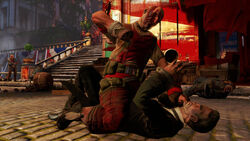
The concept of the "Founders" versus the "Vox" as well would have been much greater, the importance of the "Founders" (as a specific faction and class) rather than "Columbia" (as a whole making up all whites and non-Vox) being next-to-lost in the released game, the Vox revolution turning into an ultra-violent social uprising rather than a class revolution. The "revolution" part also would have seemingly have been in full swing by the beginning of the game, Booker having come in the middle of the conflict tearing apart Columbia. The main game instead has the Vox at first being fairly suppressed and contained and limited in action, but then becoming full-blown antagonistic after Booker and Elizabeth enter the universe where the Vox rise up en-masse, serving as the central enemies for much of the rest of the game. The player was also to have come into conflict frequently with citizens aligned either with the Founders of the Vox Populi, who would be fighting between themselves as the player came into the area. In the main game, there are only few scripted instances where the Vox would come into conflict with the Founders, mostly occurring during the Vox revolution segment in the second alternate universe (where the Vox act as allies to the player) and Downtown Emporia (where both sides will attack the player if they intervene or makes themselves known). The sides would also have been divided on their desire for Elizabeth and her powers, the Founders wanting her back to contain her powers, and the Vox wanting to use her powers to aid their revolution. The main game has ultimately Comstock wanting to keep the "Lamb of Columbia" from being "corrupted by the False Shepherd" and to make her his heir, and the Vox have little interest in Elizabeth other than killing her.
Levels
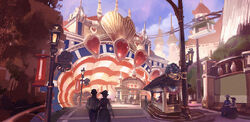
"Labyrnth of Love" concept art by Ben Lo.
Hall of Heroes
In the early development stages of BioShock Infinite, the Hall of Heroes was a Tunnel of Love ride.[7]
Emporia
Emporia in the E3 2011 demo was vastly different from the final version. Originally mentioned in IGN, this location would have been the third level of the game, and the Columbia Mail, Major's Notions, Sundries and Novelties. As with the final version, the Emporia district was vandalized by the Vox Populi, as well as seeing Citizens being tortured and executed, along the way towards Comstock House.
Aside from removed content, some scripted scenes and areas were altered and moved into other parts of the game: a store resembling Major's Notions, Sundries and Novelties was moved into Battleship Bay and Soldier's Field, as with its scripted Songbird scene moved to the final part of the Grand Central Depot. The scene with Elizabeth resurrecting a dying horse was removed, and the Tear that lead to an alternate 1983 was moved to Monument Tower. A similar scene featuring Daisy Fitzroy projecting herself in the demo was altered for Shantytown, only shown on the side of The First Lady instead of a red curtain on a building. Although the saved dentist that pulled a Vox's teeth was removed, a similar scene is featured when arriving in Memorial Gardens before passing by the gate of Comstock House, where two Vox members are grave-robbing a corpse for gold teeth fillings. The battle with a Vox Security Zeppelin (and its alarm) was altered, only replaced with a similar version moved toward the Factory in Finkton.
Dental Office
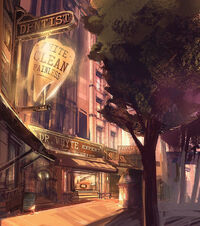
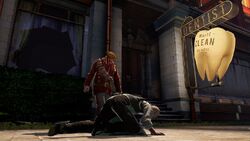
The BioShock Infinite E3 2011 Gameplay Demo, promotional screenshots, and concept art shows the dental office of Dr. Whyte, which was intended to appear in this level, but was ultimately removed. The business advertised cleanliness and a painless experience. The demo showed a scene where the dentist would be thrown out through the window of the business and then further harassed by a Vox Populi agent.
The Great Cantone
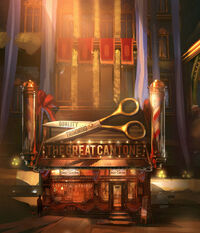
The Great Cantone was the owner of a barbershop in Columbia. The idea behind the business appears to be based around the popular image of the singing barber such as Rossini's The Barber of Seville. The shop would have featured fully-automated machines that offered quick, close, and quality trims. Other than what's shown in the concept art by Ben Lo, no other information is available for this business.
Finkton
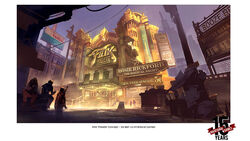
Good Time Club
Before the Good Time Club got its name, the simple title the "Fink Theater" stood in as a place holder in concept art. The structure also had a more elaborate marquee and advertisements; in particular, it featured a prominent display for a singer named "Rosie Rickford."
Shantytown
Interestingly enough, Shantytown was cut not long after a VGA trailer of BioShock Infinite, showing that level off. The reason this level was cut is unknown. Even more mysterious, after one particular developer left due to Shantytown not being included, it was finally included in the finalized game.[citation needed]
Early iterations of Shantytown were headed by art director Nate Wells, drawing inspiration from the slums of Jamaica and Key West. "All of the housing was wooden and colorful, as if painted by the residents to make the depressed quarters more livable. And each bright shack was stacked atop the next, climbing into the sky like an anthill, with the skyline piercing through it."
However, creative director Ken Levine argued that "It looked like the residents lived in garbage. It needed to be beautiful, because Columbia was designed so that even the poor lived beautifully."[8]
Originally, there were more beggars and dying people lying on the streets. Some of these people would actually grab Elizabeth and plead for money. Dead people could be found where Elizabeth would give them flowers, putting them in a peaceful position. This is still seen in the main game in some portions of Emporia.[9]
Factory
Concept art by Ben Lo shows different areas of the Factory in Finkton. While they clearly contributed greatly to the look and feel of the level, many of them portray locations that are not seen in the final game.
Later in development, rough level designs where created. Many of these early level designs would not make it into the final game.
Mad Toy Maker's Shop
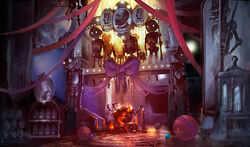
One level cut from the game was the Mad Toy Maker's Shop. This level was possibly going to be in or near Emporia and would have pitted Booker and Elizabeth against a madman who created automatons for Columbia. Originally the Toy Maker and his shop were to be of some importance in the game given the amount of concept created by Robb Waters for the Mad Toymaker's Toys, but the Art Nouveau style level was eventually cut.
Sea of Doors
The endgame which takes place in Sea of Doors, a place connecting all realities, was to feature more "lighthouses" (a representation of the doors to other realities) other than Rapture's and Columbia's. Those places, respectively named by files Arctic Lighthouse, Desert Lighthouse and Space Lighthouse, were an observatory, an Arabic-looking tower, and a space station looking very similar to Citadel Station from System Shock, a game whose sequel was also developed by Irrational Games. Based on this, it is safe to say that their intentions were to include the System Shock franchise into the BioShock-canon. If one manages to access the Space Lighthouse in the game and approaches it, they will find a small entrance containing a Columbian citizen model. Only untextured models can be found within the game's files, though the observatory can be still found outside the playable area of the Sea of Doors, on some snowy mountains, with a stone staircase and a wooden bridge between the peaks. The building's door can be opened as a scripted event, and doing so will start playing snow storm effects, and falling down through the map.
Unknown Level or Levels
The following are screenshots of area or areas that were not seen in BioShock Infinite. A few of the images could be from an early version of Emporia, but some or all of these images could be from canceled Spec-Ops multiplayer missions.
Test Buildings and Levels
While BioShock Infinite was in development there was testing done for levels and the buildings in those levels. Not only was the style of the architecture being tested, but also methods of procedurally creating buildings that would free up the level designers from having to construct each building by hand. These tests and experimental levels were never really intended to appear in the game, but give a look at how the city of Columbia was developed and what it looked like earlier in development.
Mechanics and Gameplay Elements
Cut 1999 Mode Game Mechanics
When 1999 Mode was announced it was originally stated that the player would have to make choices at the beginning of the game and that these choices would carry through the rest of the game.[10] Game files[11] show that the player would have to choose a class and this class could not be changed. If you chose the wrong class, you were stuck with it. These classes would likely limit what at the Gear the player could use and it’s possible that the weapon selection could be limited in some way as well. The classes that could be chosen from were Melee, Mobility, Soldier, Tank and Vigor. Game files also indicate that an experience system was to be used with a message saying "CONGRATULATIONS YOU'VE LEVELED UP!" for the GUI. This experience system would seem to indicate that as skill system in place and that skill points would have to allocated to be able to use weapons or at least improve the players skill with the weapon. What kind of improvements are not known.
Ken Levine is quoted as saying that ‘’This mode is not going to feel like BioShock.’‘[12] The descriptions makes 1999 Mode sound similar to that of the System Shock series which the BioShock series is a spiritual successor of. There was never an explanation given on why some aspects of 1999 Mode were removed.
Multiplayer
Several sources indicate that BioShock Infinite would have had two different multiplayer co-op modes. The first of these was called Boarder Patrol and was a tower defence style game where two players worked together to defend an area against racist political cartoon style enemies. The background for the game was that Boarder Patrol was actually a game for children of Columbia and was used to help indoctrinate children into holding racist beliefs. This mode is stated to “have never worked” and development was cancelled early on.
The second co-op mode was Spec-Ops which had four players working together to defeat AI controlled enemies. These battles would take place in areas inspired by locations from the single-player portion of the game and these areas would change over time to tell a narrative about the game’s two factions, the Vox Populi and the Founders. The maps would have some randomized content as well loot that could be used by players to modify or upgrade their characters in some way.[13][14][15]
It is unknown what the classes there were for Spec-Ops, but it’s possible they were similar to ones proposed for 1999 Mode in the single player game. These would be Melee, Mobility, Soldier, Tank and Vigor.
A "Museum Level" was close to being finished for Spec Ops, but work on it was stopped and the game mode was canceled.[16][17]
Mendelssohn Kinematic Couture
The Mendelssohn Kinematic Couture were supposedly meant to be used in the same way as Rapture's Gene Bank, but the idea got scrapped later in development for unknown reasons. However, the vending machine itself is still seen in-game, often in shambles with a single piece of Gear by its side. Files in the game reveal voice clips meant for the store usage, as well as menus allowing Gear options for switching. This implies that you could buy Gear rather than finding it scattered around Columbia.
Old GUI Designs
This blog post shows some early designs for the GUI (graphical user interface) for various features. One is for an early HUD design, another is a rough draft for a loadout screen, while the last one is for a GUI for a Gear store that was removed from the final game.
Sky-Lines
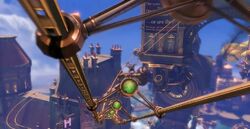
A more mechanical Sky-Line from the 2010 demo.
In the 2010 gameplay demo, the Sky-Lines appeared more mechanical, with moving chains which pulled Sky-Hooks and the trains around. In the final game, the hook seems to propel itself along the rail. Also in the 2010 and 2011 demos, Sky-Lines allowed combat over much greater distances. The moving cars also originally moved towards the player while on the Sky-Line. This forced the player to either get off or change course, making gameplay more interesting.
Sky-Hook
Originally, the Sky-Hook appeared smaller, and deployed from the sleeve. This early version was seen in the 2010 demo and in The Art of BioShock Infinite. A later version of the Sky-Hook, which become the basis for the one seen in game, would have the hook extend via a long retracting arm,[18] capable of killing enemies in a number of gruesome ways such as beheading and disembowelling.
Jet Pack
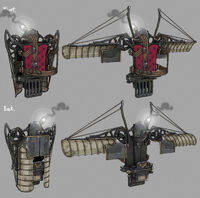
Jet Pack Concept Art.
Concept art shows that at one point a Jet Pack was considered for use by the player. There is little information on the Jet Pack, but it seems likely that it was dropped in favor of the players using Sky-Lines and the Sky-Hook.
"Jump Shoes"
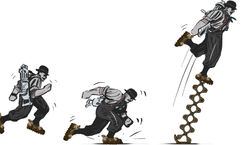
Launching in the "Jump Shoes."
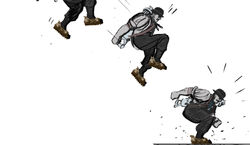
Landing in the "Jump Shoes"
The "Jump Shoes" are a piece of equipment that allows the player the make jumps of great height and distance. To propel the wearer upward the shoes deployed scissor arms which launched the user from whatever platform they stood on. These arms retracted before landing. This rather steampunk concept was cut very early in development, possibly in favor of the Sky-Hook.
Hacking
For a long time in development it was possible for the vending machines in Columbia to be hacked by the player. To hack something Booker would use a device held in his left hand. This device possessed three buttons and what appears to be a readout with a needle. The player would have to keep the device pointed at the target while the hack was taking place and upon a successful hack, the target would be struck by something that resembled electricity generated by the hacking device. The concept was still being considered fairly late in development as a number of different files reference hacking. There are also two unused sound files where Elizabeth congratulates Booker on a successful hack.[19] Why hacking was dropped is unknown, but the Possession Vigor's ability to "possess" vending machines is a likely reason. The ability to hack some machines through Lockpicking was later included in Burial at Sea - Episode 2.
Function of Tears
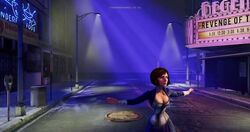
The New York Tear scene from the E3 2011 demo.
Many early trailers showed large, different Tears, and implied they would be used more often and in different ways. In the final game, many of these functions were removed and the Tears have a smaller overall role. Originally, utilizing these tears meant causing severe damage to Elizabeth, creating a nosebleed on her part, or making her so exhausted she can barely walk. This was going to affect your overall relationship with Elizabeth and change the ending. This was scrapped in the end, though the nosebleed aspect would be still be present in the main game and Burial at Sea.
Tear Gameplay Mechanics
As Ken Levine explained in several interviews, you would have a choice of three tears, and you could only choose one. You would have to stick with this choice until Elizabeth's power refreshed. During development the concept of Elizabeth closing Tears was explored.[20] It is possible that Elizabeth by closing a Tear she would gain power and be able to open another Tear more quickly. This changed the concept of Elizabeth hurting herself when she opened Tears and restricting the players' choices, making gameplay much more intense. As the game developed, Elizabeth would have gained more power and allow the player to choose two tears out of five choices in one battle scenario. In the final version of BioShock Infinite, Tears came with an unlimited usage, being able to bring in whatever you wanted at any given time. At one time in production Elizabeth could summon additional objects through Tears to help Booker in combat. They were “allies”[21], a group of people who would fight Booker’s enemies, a Handyman[22] and even a Zeppelin[23]. Elizabeth could also dismiss or “deinstate” a Handyman[24]. These more powerful combat helpers were likely removed when the number of enemies Booker could fight at one time was reduced from around a dozen to the six or so that it is now.
Destructible Objects
Fairly early in development the concept of having objects that could be destroyed was explored. The objects that were experimented with were chairs, barrels that held weapons and Columbia's Finest Ice wagons.
Weapons
In early development of BioShock Infinite many different weapons were considered and then discarded for various reasons as development proceeded. One weapon concept that was not used was that weapon upgrades would alter the weapon's appearance as they did in BioShock and Bioshock 2. This is seen in concept art for the Broadsider Pistol. This would seem to indicate that for at least some time in development the player would keep all the weapons they found throughout the game and not be limited to carrying only two at a time.
Pistol
A pistol based on the Mauser C96 was not the only pistol design considered for the first firearm Booker gets in the game. Early in development, a weapon based on the famous German Luger was also considered but ultimately dropped. Note the Vox style weapon upgrades on the Broadsider in the concept art.
Mortar
The mortar appears to be a heavy two-handed weapon that never got beyond the concept art stage. The mortar would be a weapon the player would carry around and spend a short time setting up before it could be used against enemies at long ranges. The player would have to choose the firing angle of the weapon to determine how far the rounds went, just as with modern real-life mortars. It is possible that this weapon is a predecessor to the Pig Flak Volley Gun/Hail Fire as their range is determined the same way. The mortar would have been an anachronistic weapon in Columbia as this style of mortar, the so-called "trench" mortar, was not invented until 1915 during the First World War.
Sky-Line Pack Machine Gun
The Sky-Line Pack Machine Gun is a weapon that looks very similar to the famous Maxim gun but seems to have been adapted to be carried on something called a Sky-Line Pack, of which little information is known. This weapon is smaller than a full-sized machine gun and it may have been dropped in favor of the larger and more iconic Gatling Gun.
Vigors
In early trailers for the game, Vigors appeared very similar to Plasmids. Vigors were also supposed to be able to work and combine with Elizabeth's powers; this functionality only appears in the E3 2010 debut demo. A few powers that were cut included Weapon Slave, a Vigor which allowed Booker to possess an unused weapon and turn it into an ally (this later became streamlined into several Gears), and a Vigor similar to Telekinesis.[25] A mostly removed concept with Vigors was that each Vigor type would have a limited number of "charges" instead of all Vigors drawing on the players Salt. This concept was retained for the use of the Bucking Bronco Vigor in the Cast Out the Devil carnival game and in a nearby Veni! Vidi! Vigor! where 4 Charges of the Vigor can be purchased for 375$. At this point in the game the player has no way of acquiring that much money and so cannot purchase the Vigor.
Devil's Kiss
At one point early in development, Devil's Kiss did not seem to possess the ability to be used for traps. Instead, when a “charged” attack was made, the player would release a large explosion of fire that affected the area around the player.[26] This fire explosion attack was later given to the Fireman.
Possession
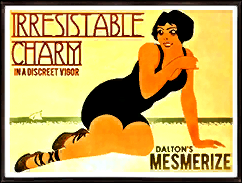
The unused Mesmerize advertisement.
Possession's name was originally Mesmerize, with the now-cut slogan: "Irresistible charm in a discreet Vigor". The Vigor's inventor was credited [on an advertisement] to a person named Dalton (who was not mentioned in the final version of BioShock Infinite).[27]
For a part of production, Mesmerize had a much different look and possibly even a different effect on enemies than what Possession currently has. When the Vigor was active, Booker’s hand would become covered with growing vines, leaves and light purple flowers. When used, the Vigor would create a compact purple cloud that would shoot out to hit the target. The target then had a purple ghost like female form and flower petals hovering about them. When used as a trap, a large flower is created in the trap location. If the trap is activated, the flower blooms releasing a cloud of purple gas that covers the area near the flower. It’s possible that enemies that are “mesmerized” stop attacking the player and walk around aimlessly, rather than helping the player in combat.[26]
Return to Sender
For some time in development Return to Sender would reflect attacks back in the direction of the attacker in addition to being able to absorb enemy fire. This seems to be an early version of the Return to Sender "shield" that protects Booker from damage when the Vigor is cast. It was unknown why the reflection mechanic was removed, but it's possible that it was considered to be too powerful.[26]
Shock Jockey
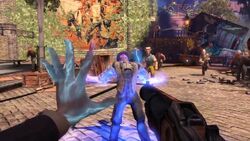
Booker using Shock Jockey in the Early Gameplay Demonstration.
The early form of Shock Jockey did not have crystals growing out of the user's hand. Instead, it looked very similar to the Electro Bolt Plasmid used in BioShock and BioShock 2.
Undertow
Originally, when using Undertow, Booker DeWitt's fingers would have turned into octopus-like tentacles, instead of the large suction cups seen in the final game.[26]
Respawn Tomb (Resurrecto)
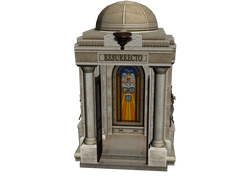
Resurrecto, a Respawn Chamber, seen only in the data files.
Resurrecto is an early respawning tomb that existed in a late Beta for BioShock Infinite. Similar to the Vita-Chamber, the concept for Resurrecto would have been able to bring the player back from the dead. Relating to the city's earlier patriotic concept, the stained glass art for the tomb features a more patriotic Columbia with the three symbols of the Sword, the Scroll, and the Key. In the final game, Booker DeWitt simply emerges from a Tear-like version of his office if he dies alone, or, if with Elizabeth, is revived by her. Although the concept was revised at a later stage of the game's story and development process, Resurrecto can still be found by extracting the model from the game's data files.
Stealth
At some point in development, stealth mechanics were added to the game. This mechanic would allow Booker and Elizabeth to avoid combat by either staying out of view of enemies or not taking hostile actions such as shooting a weapon. The stealth game mechanic was not actually removed and you can still sneak behind enemies or stay out of sight and they will not attack unless they are already in an actively hostile state or see Booker. To make an enemy enter a hostile state the enemies can hear gunfire, hear an alarm go off, see/hear a flare go off, see Booker or hear someone else call out they saw Booker. In many areas enemies will spawn in a hostile state and stealth will not work. You can sometimes attack enemies with the Sky-Hook and if killed on the first hit, it will not cause an alarm to be raised. While the stealth mechanic is still in the game, there is nothing to explain it or even inform the player a stealth option exists. The game design also makes using stealth extremely difficult, if not totally impossible in most situations. It is unknown why stealth was "removed" as a game mechanic, but it explains how it was added to the Burial at Sea DLC so quickly and in a rather advanced state, most of the work had already been done for the main game.
Removed Choices
Early in development the game had more choices to be made by the player. At some point in development, many of these choices were removed leaving only a few such as the choice of the Bird or the Cage. Limited information on these removed choices can be found in the InputAliases.int file. It is unknown how these removed choices would have affected the story, they could have led to multiple endings or they could have had no effect at all on how the story played out. Some of these choices were apparently removed because they no longer fit the story or were a result of gameplay changes such as Booker no longer picking locks.
Town Center
A number of seemingly minor choices were cut from this area. They would have allowed Booker to speak to a child, a lady, and a prisoner. Also, there was a removed opportunity to activate a Gondola and open a locked door, likely by picking the lock.
Finkton
Here a single choice was removed. It allowed the choice of setting a course to go to New York or Paris while aboard The First Lady. It is unknown if this choice was at the start of the level after first boarding The First Lady or later after Elizabeth had killed Daisy Fitzroy. It should be noted that, from a narrative perspective, the latter would make more sense.
Emporia
A major sequence where the choice of intervening in an execution was removed. This sequence can be seen in the E3 2011 gameplay demonstration. Another choice involved turning off a light.
At one point Booker and Elizabeth were to pick up the poster of Sally found in The Salty Oyster and give it to someone else (possibly an early version of Ronald Frank).
Sea of Doors
At the end, there is a choice to be made on if Booker would Pay off Comstock's Sins or would refuse to do so. This choice apparently comes before the sequence where Booker gives up Anna to Robert Lutece. How this choice effects the end of the game is not known.
Characters
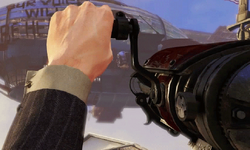
Beta Booker in E3 2011 Demo.
Booker DeWitt
The early version of Booker's arms were seen covered by sleeves from a pin-striped coat. This version remained in most of the early gameplay footage, even after the artwork debut of his appearance on the EGM cover, which had him appear with rolled shirt sleeves. It wasn't until the 2012 Beast of America trailer that Booker was finally given rolled sleeves to match his artwork appearance, along with his hand brand.
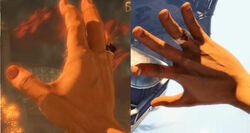
Close up of the ring from the Beast of America Trailer.
In the Beast of America trailer, at one point it shows Booker wearing a ring with a devil's face, similar to the icon of the Devil's Kiss Vigor.
Before he was voiced by Troy Baker, he was voiced by Stephen Russell in the first demo trailer.[28]
Elizabeth
Elizabeth was originally supposed to be 17 years old, instead of 19, when the player meets her in BioShock Infinite, but this turned out to be too young for the character. The developers felt that she was "too Disney princess" and some of Elizabeth's scripted animations, meant for Battleship Bay, even had to be cut because they were coming off too similar to Rapunzel from Walt Disney's film Tangled, respectively.[29]
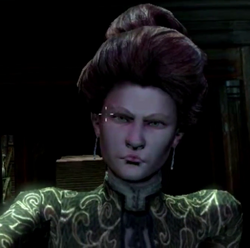
"Gibson Girl" Elizabeth.
Prototype "Gibson Girl" Elizabeth
Early in the development of BioShock Infinite, Elizabeth had many revisions before her final form. As revealed in an IGN interview, an early model for Elizabeth (which had previously been shown as concept art sketches in The Art of BioShock Infinite) had been tested within the game world. Nicknamed "Gibson Girl" and based on illustrations of women during the era, that model was cut early on. The developers did not favor this early form, as both she and the player would not speak, and her interactions were highly scripted, periodically taking control of the player to direct towards objectives.[30]
Alpha/Beta "Corset" Elizabeth
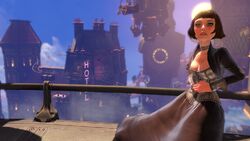
A better view of [Alpha] "Corset"[31] Elizabeth.
In early gameplay trailers, Elizabeth's powers revolved less around quantum physics and functioned more as general magic—she had the ability to raise storms, use telekinesis, and combine objects through fusion (which later evolved into the Return to Sender Vigor). She also seemed to have a more child-like personality in the E3 2011 trailer, which was toned down for the final release of the game. Her appearance in pre-material screenshots, Debut Teaser, and 10-minute Demo show her with darker hair in an anachronistic shingle bob style, dark blue-grayish dress, and over-sized eyes. It should also be noted that this version of Elizabeth has a slightly more pronounced bosom when compared to her final version. An updated version of this original model actually appears as one of the alternate Elizabeths at the end of the game, and as a statue in the downloadable content Clash in the Clouds at the Columbian Archeological Society, along with an unused third Handyman model.
Cornelius Slate
In concept art, it's shown that Slate was originally planned to be a more human-looking Jockey Junkie (seen below) with short, magenta crystals around his scalp and other crystals protruding along his uniform. The uniform itself is the original soldier uniform he used 20 years before. However, once the Vigor Junkie concept was scrapped, Slate was changed to a normal citizen with US Army Captain's uniform, though he still has crystals growing from his forehead after he started drinking the Shock Jockey Vigor hours before Booker and Elizabeth came to him.
Slate has an unused fight mechanic to fight the player. He has high movement speed, and no actual firearm and instead uses Shock Jockey. He will run around and throw multiple traps at the ground. When he is far enough away from you, he will throw them at you. He has more health than normal enemies, but not too much to not be killed. When killed, he will not drop any loot in final gameplay.[32]
Daisy Fitzroy
Aisha Tyler was originally considered for the voice of Daisy Fitzroy, who even recorded 47 minutes worth of dialogue, which was left unused.[33][34]
Daisy Fitzroy/Voxy Lady
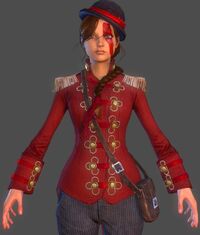
The finished model, nicknamed "Voxy Lady".
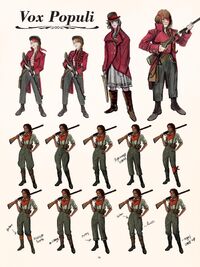
Concept art showing off the woman.
Concept art for the Vox Populi shows Daisy Fitzroy and another Vox woman. This concept was developed into a character model, but the model was never seen in-game.[35] It is unknown if this was an early model for Fitzroy or not, but the details on this model suggest that she would have had some major role in the game.
Songbird
Before it was known as the Songbird, it was only named as "Him" by Elizabeth. In the 2010 debut demo, he is briefly seen during the ending of the demo, where he sounds identical to the Big Daddies from BioShock and BioShock 2.[25]
In early footage, it appeared as though Songbird was an ever present threat that would be confronted in combat situations. In the final release, Songbird only shows up in scripted events and cutscenes and cannot be attacked. Originally, you had the choice between either attacking or hiding away, which would affect your relationship with Elizabeth.
Zachary Hale Comstock

2011 E3 depiction of Comstock.
In early versions of the game, Zachary Hale Comstock's appearance was of a middle-aged man with slicked-back hair and a scar over his eye or wearing glasses. Both versions were removed from the final version of the game, which could reflect a change in his role in the game's overall story. Textures of an unused version of Comstock, presumably from early stages of development, can be found on the backside of a building. The early versions of Comstock look closer to the same age as Booker and look much similar in facial appearance.
Enemies
Automatic Gentleman
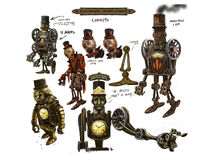
Early concept art of various types of 'Automatic Gentlemen'.
Not intended as an enemy, Automatic Gentlemen were envisioned as automatons that acted as servants to the rich of Columbia and would likely have been seen numerous times over the course of the game. While Automatic Gentlemen were cut from the game fairly early in development, the various vending machines encountered in Columbia feature animatronic figures that resemble them . The Automatic Gentleman also served as inspiration for the Motorized Patriot.[36]
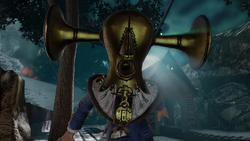
Beta Boy of Silence in an unknown area.
Boys of Silence
The Boys of Silence were originally meant to appear as a recurring enemy, but in the final version of the game, they only appear in Comstock House. They were shown to be an enemy feared by the player, much like Songbird, appearing in certain areas making you re-think the way to handle a situation. The Boys of Silence were also beatable, but now simply disappear if you're spotted or if you attack them. Originally, they were blind and relied on their sense of hearing, rather than spotting the player using a spotlight similar to the cameras in the first BioShock as they did in the finished game.
When BioShock Infinite was meant to have significant horror elements, these enemies were showcased as the most horrifying creatures. Not knowing what was under the masks would make the player both scared and interested in what story was behind them. Originally it was hinted they were orphaned children, but any stated backstory was virtually scrapped in the final iteration.
Claw Daddy
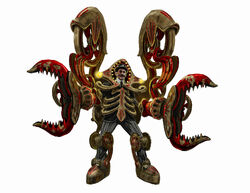
The concept for the Claw Daddy.
The Claw Daddy was an enemy that was cut from the final version of BioShock Infinite. It was conceived as an individual wearing a crab-like exoskeleton that would grab people and rip them in half. From close-ups of the Claw Daddy, it can be seen that the pilot's face is distorted from being exposed to Tears. This concept eventually evolved into the Handyman.
Columbian Civilians
When Columbia was first envisioned, the citizens of the city were much like the Splicers of Rapture. They were insane and would attack the player on sight. This led to the development of the Merged and people with “Nouveau scars” that were also a result of being exposed to Tears. But rather than being merged with an alternate version, the person’s flesh would be twisted and warped. These scars are complex and organic looking making them appear almost decorative in some way.
The Nouveau Scared and radical Merged concepts were dropped as Columbia’s art style evolved and the Art Nouveau style mostly left behind. Another problem with the early concepts was that the clothing was not period appropriate and seemed too “fantastic” looking. A further problem with these designs was a lack of uniformity in their proportions which meant that each model had to be animated individually, making for a large amount of work and other problems.
The next stage of the Columbian civilians was having them become more stylized and more like caricatures. This led to the new problem with inconsistencies in poly count, the inability to share art assets and in crowds, it was easy to see that the same model was being used over and over again. This led to the current more realistic design and period correct look.[37]
The Beast of America trailer for BioShock Infinite shows footage of an early version of the Raffle Park. A civilian-woman with a blonde bob-hairstyle wearing a blue dress can be seen walking during the scene.[38] This woman. her dress and hairstyle are not seen in the final version of the game. She was cut fairly far into development, as the Raffle Park is near identical to the final release.
Crow/Charles
- Main article: Charles
A guard or servant to Henry Saltonstall, Charles played a small part in introducing the Murder of Crows Vigor in early gameplay footage. While small references to Saltonstall remain in the final game, Charles is not mentioned at all. In The Art of BioShock Infinite, Charles was shown as a Vigor Junkie, and his model wore black clothing. A Vox Populi version would have him wear a red hood, with tied knots as devil horns.
Early and Unnamed prototype Enemy
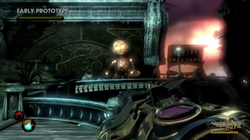
Unknown Enemy.
Appearing in the same video as the prototype "Gibson Girl" Elizabeth, there is an unnamed enemy shown resembling a giant mechanical doll in appearance. No information has been given on what the enemy is or does and it is likely it was scrapped early in development from the Art Nouveau version. It is also possible that this doll was just a stand in for something else or was placed there to give Elizabeth something to draw the players attention to.
Electro Gloves
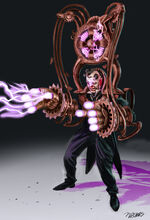
A detailed version of the Electro Gloves enemy.
The Electro Gloves was an enemy cut from BioShock Infinite fairly early in production. It was a powered exoskeleton with a generator that powered mechanisms on the exoskeleton's "hands" that enabled it to fire bolts of electricity at enemies in a fashion similar to Shock Jockey. A close examination of the pilot's face shows that he is injured and unhealthy looking.
Enhancer
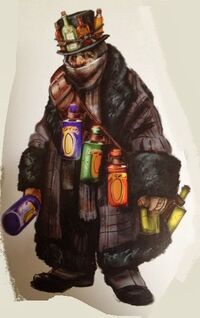
The Enhancer.
The Enhancer, also known as Snake Oil, was a cut enemy from the final game of BioShock Infinite. They were conceptualized as potion-carrying enemies that would attack enemies by hurling balls of energy while healing nearby enemies by throwing potions at them. They had the appearance of a rotund, coated individual carrying multiple potions and elixirs.
Fink Security
Fink Security was a unique enemy originally stated to appear, but it was cut for unknown reasons. Images only appear in the concept art of the game. They were originally security guards for Fink Industries, dressed in green attire, and carrying Triple Rs. In the final game, Jeremiah Fink offers Booker the position of Head of Security to replace Scofield Sansmark. There's nothing distinctly different between the security agents and other soldiers.
Fink Factory Workers
Early concept art shows that some workers in Fink’s Factories would actually be part of the machines they were supposedly operating. These emaciate workers were locked into the machines by a harness and the stumps of their arms are placed into the machine to control them. While not appearing in the final game, the concept of Fink turning people into machines was retained as Fink workers performed their duties in a very regimented and robotic fashion.
Freaks
The so-called “Freaks” were enemies conceived extremely early in the development of BioShock Infinite. The Freaks were people who were infected or mutated in some way with a compulsion to eat corpses. Upon consuming a dead body the Freak will become monstrous, growing in size and ferocity.
One Freak was a young girl named Shelly.[39] When transformed, she is a 9-foot tall monster with claws and arms so long they nearly reached the ground. The concept art for the Freaks show that many were imprisoned or restrained in some way to try and keep them from eating the dead and possibly the living. Shelly is portrayed as having a cage around her head and another freak (not pictured here) wears a straitjacket. When the basic themes for BioShock Infinite were established the concept of the Freaks was dropped.
Handyman
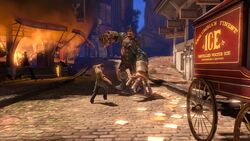
Early appearance of Handyman in pre-game promotional image.
An additional Handyman model was originally planned for inclusion in the game, wearing patriotic clothing, sporting hair and a mustache, and having the frame of his Autobody uniquely designed. This particular Handyman may have had a minor role in the story as he calls Elizabeth by her name and physically tries to stop/capture her and Booker in the 2010 demo. Unlike the final game Handymen, he seems much "healthier" and even smirks at Booker's attempt to hit him with a shell using Telekinesis. This might have been the reason why he was cut, as developers wanted to emphasize how sick and miserable Handymen were. Cut from the final release, Clash in the Clouds DLC featured this model as an unlockable in-game statue in the Columbian Archeological Society, along with the Beta Elizabeth.
Mad Toymaker Toys
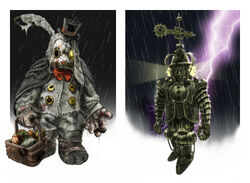
The Toymaker's dolls.
Before the game's core concepts were finalized, there was an early draft for Toy-like Automatons, created by a "Mad Toymaker", resembling animals in festive outfits. There were four designed variants of these toys: a rabbit wearing a top hat and tuxedo, an owl in a night themed suit with retractable blades attached to its arms, an elephant with a Slow-Pro-like back-mounted cannon that would fire cannonballs when it pulled the rope, and a moth with painted wings like stained glass; the latter concept would evolve into the Songbird.
The Magician
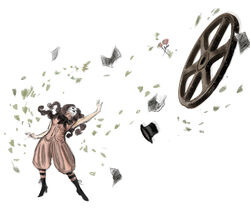
The female Magician using her powers.
The theatrical Magician was an early idea for an enemy. Existing in both male and female variations, these Sander Cohen-inspired enemies possessed the power of Telekinesis and could manipulate the environment with it. They could also create minions to fight for them. Concept art shows a male magician shaking a man upside down with his powers, causing valuables to fall off the man. Another concept shows the female variant using her powers to hurl objects.[40]
Merged
The Merged were to be enemies who existed after being exposed to Tears for an extended period. As a result of encountering various incarnations of themselves across dimensions, their facial features were twisted and warped and deformed. Concept art by Robb Waters shows the Merged having multiple mouths, eyes or noses and can be quite grotesque. The concept of the Merged was not totally removed from the game, however. At several points in the game Booker and Elizabeth will encounter people that will shimmer and warp as a result of Elizabeth merging two different realities together and a person remembering being dead in one reality and alive in the other. Chen Lin, when seen in his workshop after going through the Tear in the basement of the Good Time Club is the most prominent example of this.
Motorized Patriot
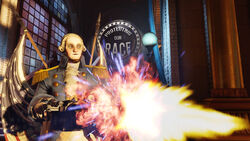
Beta Motorized Patriot attacking on Player.
Prototype or Alpha Motorized Patriot
Originally, the Motorized Patriot evolved from the concept of the Automatic Gentleman. The initial idea was inspired by a 20th-century fascination with exploring technology into the field of early robotics and complicated machinery. Irrational Games felt that Columbia would use its scientific hive-mind imagination to create a mechanical servant for their society. As Nate Wells mentions, "There's this fantasy that people of the time wanted these automatons to do things for them. We don't start with a gun. We set the vibe first.[41]
Late Alpha Motorized Patriot
The concepts for the Motorized Patriots as Benjamin Franklin and an unused Thomas Jefferson would have been more distinct from the George Washington version. Both had concepts for their own distinct damaged faces, such as Franklin having no glasses and the right side of the face and eye missing. Jefferson would have had missing eyes, a broken jaw, no face, and burned hair. In addition, both would have worn their own variant colored coats (purple for Franklin and green for Jefferson), similar to those seen on the Founding Father balloons.
Beta Motorized Patriot
The Beta Patriots originally used normal American flags on the Beta Patriot, as older previews showed Motorized Patriots with similar, if not the same, flags in place of Columbian ones. This may have been updated in Burial at Sea, as the Patriot that can be summoned through a Tear bears Columbian flags.
Little Sister Counterpart
Very early concept art by Robb Waters[42] and Jorge Lacera reveal that there was an idea to include a Columbian version of the Little Sister from Rapture. The concepts were made in a "dark, European Art Nouveau style" or "Rapture in the Sky" phase of the game, before the finalized style was chosen. It is unknown if they actually intended for the Little Sister counterparts to appear, or if the artists were just creating these concepts due to it being a BioShock game and them figuring out the overall style. In the final version of the game, the Big Daddy and Little Sister dynamic are seen between the Songbird and Elizabeth.
The Resurrector
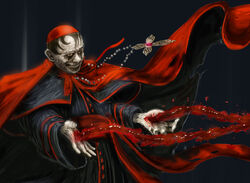
A later version of the Resurrector enemy.
Before the Siren, a concept enemy known as the Resurrector served as the forerunner of an adversary that would bring back or manipulate the dead in some fashion. Dressed to resemble a Cardinal of the Roman Catholic church, the Resurrector would apparently use the blood flowing from the palms of his hands to "resurrect" the dead to fight for him. The earlier version of this concept wore long robes, a large paper mâché "saint" mask, and had "bleeding hearts" carved into the palms of their hands from which the blood flowed.
Security Camera Automaton
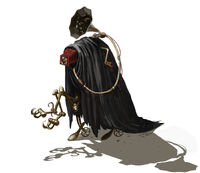
The Security Camera Automaton. By Robb Waters.
A piece of concept art from early in development shows a cloaked automaton with a camera for a head. This appears to be a Security Camera like those in Rapture, but it would be able to patrol an area rather than just be set in a fixed location. Another difference is that the Security Camera Automaton had several clawed hands which could be used to attack or defend itself with. While the roving Security Camera Automaton was cut, it is possible that the concept influenced the development of the Boys of Silence, who perform the same role.
The Siren
It was originally planned that the Siren would be a reoccurring enemy. In the final version of the game, she only appears as a boss in Downtown Emporia and acts in a plot-significant role. In Clash in the Clouds, the Siren reoccurs as an enemy and appears in two separate maps.
Slate's Soldiers
Concept Art originally showed additional unique outfits for Slate's Soldiers in two Attractions at Hall of Heroes (stereotypical "Asian" and "Native American" outfits). Some Slate soldiers were planned to have a more native American appearance which would be around in Hall of Heroes to fight Booker. Variations were only used for Slate's Crow in the final gameplay.
A unique "Asian" mask from one of the concept outfits did finally appear in Burial at Sea - Episode 2, at Fontaine's Secret Panic Room at Manta Ray Lounge as one of Fontaine's disguises.
Columbia Tank
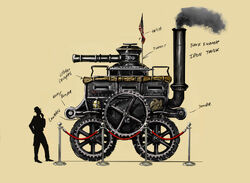
Concept art for a Columbia Tank. By Robb Waters
No information exists about this removed content other the concept art. The tank is from early in BioShock Infinite's development and did not make it past the drawing board. While called a tank, it resembles an armored car which was already being used by several of the world's militaries in 1912.
Vigor Junkies
According to The Art of BioShock Infinite, Vigor Junkies were planned to be one of the types of enemies. As Columbia's version of the Splicers from Rapture, they suffer psychological deterioration as a result of excessive Vigor abuse. However, the Rapture comparison limited the use of Vigor Junkies in the game, and an in-game explanation by Citizens' dialogue in the Columbia's Fair mentions that average Citizens were not that interested in obtaining Vigor abilities, due to the formula "kinks" that Fink needed to work out.
A few aspects of the Vigor Junkies are still present in two of the currently used characters, the Crow and Cornelius Slate. Both characters' madness has been exacerbated by their repeated use of a particular Vigor, Murder of Crows and Shock Jockey respectively, with the latter, even having small Shock Jockey crystals protruding from his head. The Murder of Crows ability of its Junkie was also altered, as the 2010 demo showed Charles, a removed character that was also conceptualized as a Vigor Junkie with the Zealot. He would have been able to possess the same crow-unleashing ability as the player. But like the character, that ability was altered in the finished game to being surrounded by crows while teleporting. Although the Fireman's appearance was not in the Vigor Junkie concepts, a Vigor Junkie character in a top hat, glasses, and a black coat shows many of the same Devil's Kiss abilities as a Fireman.
Its concept scrapped, the unfinished model of the Shock Jockey Vigor Junkie still remained in the game's files, apparently later repurposed as the Frosty Splicer in the Burial at Sea DLC.
Unused Enemy Voice Lines
There are over 300 unused voice lines for enemies in the game with a name containing “taunt_creepy”. These voice lines are of much different character than the normal taunt lines. These taunts consist of unhinged laughter and weeping, delusion statements, denial of responsibility for murder, paranoid fears, manic urges to kill and compulsive disorders. These lines exist for the cop_male, fndr_male, fndr_female, vox_male and vox_female. In general, these voice lines do not fit the atmosphere of the final version of Columbia and strongly resemble the insane ranting of the Splicers of Rapture. This would indicate they may be from one of the very early versions of the game while Columbia had the Art Nouveau style.
Selected Transcriptions of Files
vo_cop_male_02_taunt_creepy_18041.ogg ”Show me how to shed my skin!”
vo_cop_male_05_taunt_creepy_18331.ogg ”Negative, negative, Negative! NEGATIVE!”
vo_cop_male_08_taunt_creepy_19806.ogg ”Just let me cut you!”
vo_fndr_female_01_taunt_creepy_20808.ogg ”Stop trying to control me!”
vo_fndr_female_03_taunt_creepy_22374.ogg ”You made my life unbearable!”
vo_fndr_male_01_taunt_creepy_19884.ogg ”She died, I remember!”
vo_fndr_male_02_taunt_creepy_17347.ogg ”They won’t stop screaming!”
vo_fndr_male_04_taunt_creepy_19087.ogg ”My skin disappears at times. Oh, oh.”
vo_vox_female_01_taunt_creepy_21859.ogg ”To do it right you need to shoot at least five people!”
vo_vox_female_02_taunt_creepy_22235.ogg ”Take me home. Take me home with you!”
vo_vox_male_02_taunt_creepy_20238.ogg ”We’ve tasted human flesh.”
vo_vox_male_05_taunt_creepy_20667.ogg ”I do everything three times!”
vo_vox_male_07_taunt_creepy_21378.ogg ”They leave the barbs in when they pull my thoughts out!”
Objects
Voxophones
- 1) GOOD GENES RANT - The only voxophone removed from game.
Kinetoscopes
There are three unused Kinetoscopes in the game files that were never put in the final of game.
- "Columbia to Sterilize Dimwits and Defectives!" - Founders propaganda for racial purity.
- "Visit Battleship Bay!" - Kinetoscope advertisement for Battleship Bay.
- "The Death of Our Lady" - Kinetoscope about the death of Lady Comstock.
Mannequins
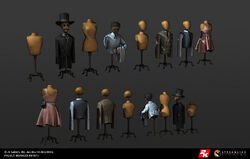
An image of various mannequin models for BioShock Infinite shows several that didn't make the cut. The mannequins wearing the pink dress and beige suit as well as the nude mannequin with a head are the only ones that were used of the lineup. The unused models consist of a nude mannequin without a head, a nude mannequin with specific female proportions, a mannequin in a black western outfit, a mannequin in a waiter outfit and a mannequin in a dress shirt and waistcoat.
Silver Trays with Food
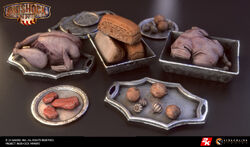
Models for silver serving trays with food items were left unused. There were seemingly three tray models: a round silver tray/plate, a deep rectangle-shaped tray, and a flat octagonal tray. The food items included: a raw turkey, a raw chicken, raw beef, onion, garlic, and a loaf of bread.
Turnstile

A model for a waist-high metal entrance turnstile was produced but never implemented. It was a coin-operated machine which was likely replaced by the free-to-use oneway full-height turnstiles present in the final version of the game in locations like Soldier's Field.
Burial at Sea
- Main article: Burial at Sea
The two episodes of BioShock Infinite's downloadable content Burial at Sea had many ideas that never made it to Infinite's final version. Most of the information is from the concept art.
Characters
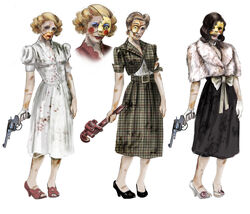
Concept art of Splicer design.
Early Splicers
Many unused Splicer model variants and props were proposed but removed or repurposed. This includes two more female Splicer designs, weapons (with the likeness of Columbia weaponry), and attire.
One design presented a more professional-looking female Splicer dressed in a blouse, belted skirt, and matching bolero jacket. The other would-be female Splicer in evening attire consisting of a black dress with a plunging neckline and bow, a white fur shrug, a pearl necklace, and gloves.
Elizabeth
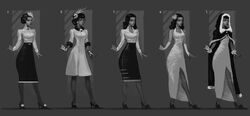
Elizabeth's five concepts.
Before Elizabeth's primary outfit was chosen, she had five different proposed variants which included an A-Line day coat, an evening gown with formal gloves, a hooded cloak, and an outfit similar to her final ensemble, but with a more revealing neckline. These proposals also showcased alternative shoes, accessories, and hairstyles.
In interviews prior to her playable debut, she was to retain her tear ability that would have created a new experience for players apart from the stealth mode implemented in the final game. For the sake of the plot, her tear abilities were removed from the final game and replaced with Plasmids.[43]
Grenade Launcher/RPG Splicer
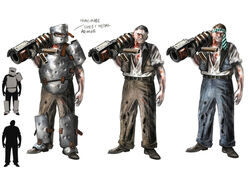
Concept for the Grenade Launcher Splicer.
Concept art exists for a Splicer enemy that would have carried a grenade launcher or RPG with them. Like other Splicers in Fontaine's this enemy would have worn impromptu protective covering; in his case, armor fastened from sheet metal. This unique enemy type did not appear anywhere in the game, but the model's design is slightly similar in appearance to some of the male Splicers encountered in the store, albeit, more buff. In terms of their weapon choice, bulky physique, and use of armor, this proposed Splicer is similar to the Beast Heavy Hitter enemy from BioShock Infinite.
Jockey Splicer
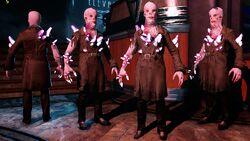
The finalized model.
The Jockey Splicer was an enemy who had consumed too much of the drinkable Plasmid: Shock Jockey. The character was alluded to by Booker in Burial at Sea - Episode 1 and supposed to be featured in Burial at Sea - Episode 2 but was ultimately cut far along in the process for unknown reasons. It even had its own character completed model, which can be found in the game files, and cartoon caricature, which can be seen in the Need to Know Theater film Message Received, Ryan!. Unused sound files for Elizabeth has her refer to this splicer as a "Jockey" [44], "Shock Jockey"[45],"Shocker"[46], and a "Volter"[47].
Nitro Splicer
Unused audio files from Burial at Sea - Episode 1 indicate that Nitro Splicers were intended to appear in the downloadable content taking place in Rapture. Elizabeth would have alerted Booker DeWitt when a Nitro Splicer was spotted, by saying something similar to: "Take care, it's Nitro…"[48]. The reason why the Nitro Splicer was not included in either episode is not known.
Law Enforcement
A slide in Gavin Goulden's "Change Is Good: The Importance of Iteration Within a Character Art Pipeline" GDC presentation shows a line-up of NPCs in Burial at Sea. Among Splicers, the Big Daddy and Little Sister, a police officer (identical to the ones seen in Columbia) are shown,[31] which reveals that police or security forces were intended to be encountered in the antebellum streets of Rapture. Concept art by Scott Sinclair also shows policemen stopping a crime on the streets of Rapture.[49] In the final game, no security forces are seen apart from Ryan Security. Others have claimed that officers would have looked similar in appearance to the Ducky model from the original BioShock.[citation needed]
Little Sister
Alpha-footage for Burial at Sea - Episode 1 reveals that Booker would have seen the Little Sisters walk into the Little Wonders Educational Facility with their instructor, and be able to watch the little girls go about their business, playing games or daydreaming, behind windows within the facility.[50]
Rapture Citizen
In Alpha-footage for Burial at Sea - Episode 1, both male and female citizens had at least two more head and model variations not seen in the final game. Some of the head models were repurposed from BioShock Infinite. At least two variants can be seen walking with a cane or a baby carriage.
In early rendered screenshots of High Street, there is a model that wears a trench coat. This model could have simply been another model variation, a specific character model, or a precursor model of what would have become a Jockey Splicer.[51]
Suchong's Lab Assistant
Unused subtitles indicate that a lab assistant, possibly named Harlan, was supposed to be heard and possibly seen inside Dr. Suchong's Free Clinic after Elizabeth arrives. This assistant is heard berating and beating a Big Daddy that had gone "off the reservation" to travel to Fontaine's Department Store and kill Splicers. The idea for the drill was from this assistant and he was very angry that his idea was being "killed" by Suchong because of this Big Daddy's actions.[citation needed]
Octopus
An eight-armed octopus was seen on a Burial at Sea - Episode 1 pre-launch image of Elizabeth looking over the city of Rapture from the large windows on Market Street,[52] and on the banner for Burial at Sea - Episode 2.[53] This octopus has however not been seen in the final versions of the two episodes though the model is loaded into the engine at some point in Episode 1.
Locations
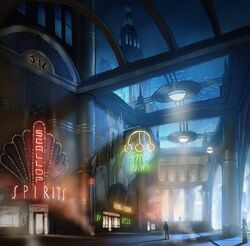
King Pawn & Scallop Spirits.
King Pawn
Early concept art of an area that resembles Market Street shows a King Pawn store located on the promenade. It's unclear if it was intended to be on the strip or if it's just a placeholder for other stores.
Market Street
According to Alpha footage for Burial at Sea - Episode 1, as opposed to the retail version of the DLC, Market Street and High Street were connected by glass tunnels instead of an elevator. Through careful observation, the glass tunnels would have led to the lower portion of High Street in which then the player would then proceed to take an elevator up. This lower portion can be seen in the retail version of High Street in Burial at Sea - Episode 1.[50][54]
Scallop Spirits
Concepts for Market Street shows a bar or liquor store called Scallop Spirits on its strip, which was later removed in exchange for Sinclair Spirits.
Seahorse Station
Renamed Pavilion Station in the final game, the Seahorse Station would have been a separate building all on its own, with a tram schedule board. Concept shows two designs, one pristine and one destroyed.
Objects
Air Grabber
Concept art and audio files reveal that there was to be a scavenger hunt for parts to create the Air Grabber, which would have been created using makeshift items found around Rapture, including the Pneumo Bots.
Burial at Sea - Episode 2 Loading Screen
The drawing of Elizabeth seen on the loading screen for Burial at Sea - Episode 2 had a different design than what is seen in the final game. Elizabeth seemingly had a different hairstyle. The original drawing was most likely used in the Paris-sequence as well.
Imprinting Studies
Concept art shows a third imprinting study involving a mannequin with a resemblance to Elizabeth, two pigs with removable metal helmets with color signifies similar to the Big Daddies.[55]
Posters & Signs
A few posters and signs were made for Burial at Sea - Episode 2, which did not make it into the final version of the game, including:
Pneumo News Network
Partially unused texture files indicate the "Pneumo Bots" moving along the Pneumo Lines were to broadcast news, advertisements and possibly other content. The channel was named the Pneumo News Network. Early in development pneumo lines could be found Market Street and the Pneumo Bots would broadcast news as they moved along them.[56][57] In the final version of Burial at Sea - Episode 1 these Pneumo Bots can only be seen at Jet Postal stations and the screens only display static.[58]
Pneumo Turrets
According to Alpha-footage, concept art, cut dialog and objective lines, Pneumo Turrets running along the Pneumo Lines would have been present in Burial at Sea - Episode 1. They featured mounted guns connected to a camera that ran freely along the Pneumo Lines. The player had to knock off and scavenge one for its hook in order to build an Air Grabber and progress through the department store. For that, the store's security had to be activated to deploy the turrets.[50]
Noisemaker Bolt Ammo Box
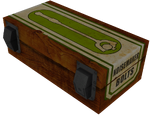
The unused ammo box.
Much like the Tranquilizer and Gas Bolt, the Noisemaker Bolt was also given an own ammo box. But since the Bolts are only acquired by hitting a blue pin while Lockpicking, the ammo box was left unused.
Books
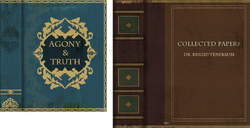
The books with text.
A stack of books exists in the game files that were left unused. Two of the books are named while the two others have no writing on them. One book is named Agony & Truth without an author and the other is named Collected Papers¨ by Dr. Brigid Tenebaum. Brigid Tenenbaum's name is misspelled as "Tenebaum", which could be why the book was not used.
Audio Diaries
Burial at Sea - Episode 1
Burial at Sea - Episode 2
Removed Elements from Burial at Sea - Episode 1
Many of the quest elements we know of that were removed from Episode 1 concern a quest to acquire parts for Elizabeth to make a Sky-Hook. This entails activating a security system, destroying a Pneumo Turret, locating a workbench with tools and obtaining certain parts. As a note, despite being called a Sky-Hook, these files could be from a time period before the name “Air Grabber” was used. A door that had been chained shut and the chains needed to be removed with a tool, possibly the Air Grabber. In one instance a door would be powered open by using the Radar Range, called the Microwave Gun in the files.[59] This seems very similar to the quest to acquire Shock Jockey in the final version. At one point while still in Rapture, Booker would take a key from Elizabeth, but the circumstance for this is unknown, but it seems likely that Elizabeth stole this key.[60] A new Plasmid was to be introduced in this episode called Chameleon[61] which allowed the player to turn invisible much like Peeping Tom did in Episode 2. Upgrades for the Chameleon Plasmid allowed the player to do double damage while invisible and the Shield to recharge.[62] The Bird’s Eye Sniper Rifle could be brought to Rapture through a Tear at one point but was removed.[63] There are descriptions of six Gear not seen in Episode 1 and they are Brittle Bullets, Coat of Harms, Little Bang Theory, Make Soup, SoulTrap, and Urgent Care.[64]
The files also reference Elizabeth being able to open two tears simultaneously. How this is achieved and when Elizabeth gains this ability is unknown, but it is possible she starts Episode 1 being able to do this. The files also indicate that Elizabeth was to use Gear or have Gear like abilities. The first of these "GearLiz" listings is Winter Shield which evidently was to give Elizabeth protection from damage. The other is Salt Cost Reduction, a possible indication that Elizabeth would have been using Plasmids or Vigors.[65] Given that the developers didn't want Elizabeth to "steal kills" from the player it seems likely that the use of Plasmids or Vigors would be purely defensive in nature. These defensive actions on Elizabeth's part do fit in the early development of the character when she would defend herself from an enemy by kicking them if they tried to grab her.[66]
While most of the major plot points for Episode 1 seem to be the same or at least highly similar to the earlier version of the story there are some changes that have a profound impact. First, the Booker in Episode 1 is not a version of Comstock that fled to Rapture but is the same Booker DeWitt from the main game. This is shown by Booker calling Plasmids, Vigors rather than the Rapture name. Booker also uses the term splicing in a very natural way which would seem to indicate that he had been in Rapture for some time, possibly years.[67] Given the events of the final version of Episode 1 there is the possibility that the player is supposed to think that the Booker in Episode 1 is not the same Booker as in the main game and there is a reveal at some point about this similar to the one about "Booker" actually being a version of Comstock. The girl that Booker was hunting for was not named Sally but is his daughter, Anna, who has been turned into a Little Sister.
It is unknown what Booker remembers and does not remember in Episode 1 and there is no evidence that he recognizes Elizabeth. The files also have a reference to the sequence near the end of the main game where Booker grabs Comstock in an attempt to stop him from taking Anna through the Tear to Columbia.[68] When this sequence occurs in Episode 1 the file name "S_DEPT" showing that it takes place in Fontaine's Department Store and should be connected to the reveal about Booker in Episode 1 is the same character as in the main game. Given that Booker has Anna it can be surmised that he was successful in recovering his daughter from Comstock, but had forgotten about it. It can be assumed that how Booker and Anna got to Rapture and why was Booker was having memory problems would be explained.
Removed Elements from Burial at Sea - Episode 2
Burial at Sea - Episode 2 was quite different early in development from how it eventually turned out. While it still took place in Fontaine’s Department Store the player was not playing as Elizabeth, but as Booker DeWitt from the main game. Booker’s name is not stated, but the character speaks like Booker, calls a Plasmid a Vigor and has a daughter named Anna. Elizabeth’s status in this early version of Episode 2 is never made clear. Her name is mentioned once when Booker talks about a recording of Elizabeth. However “quest” lines spoken by Booker often use “we” and “us” indicating that there are two people. It seems a logical conclusion that Elizabeth is with Booker.[69]
In this early version of the story, Fontaine’s Department store is still a prison, but there are no signs of Atlas being involved. At some point in the story, likely in Episode 1, Booker had battled a Big Daddy in his effort to rescue Anna but failed. Recovering from the loss Booker decides it was “time to be smart” and lure the Big Daddy into a trap and defeat him. To lure the Big Daddy they need to lure Anna with a recording of her favorite lullaby. Use of the lullaby has the secondary benefit of reminded Anna of her father which because of the process that turned her into a Little Sister interfered with her memory. In addition to the song, a damaged jukebox must be repaired and to do both Booker must enter the stories Radio Department. Unfortunately, this area is protected by a microwave barrier. To get through this barrier Booker needs to acquire the Chameleon Plasmid which he calls a Vigor. A code to open the jukebox to make the repairs must also be located in the Radio Department. After that, the mannequin of a young girl needed to be located and then the trap can be set up in the Atrium of the store. After the defeat of the Big Daddy, it is discovered that a bomb has been set in the building and they have to find the location of the bomb and get into the room it is locked in to disarm it.[70]
The file names for the Little Sisters indicate that Anna was to have a purple dress and two versions of her head and face. One version would be Anna as a Little Sister and another "clean" version showing her when she was not a Little Sister. The version showing Anna as a Little Sister was given blond hair used for Sally in both Episode 1 and Episode 2.
In addition to the early storyline information, there are references to quests for something that allows Elizabeth to open more than one Tear at a time up to a total of three. The phrasing indicates these are from a later version of the story where Elizabeth is the main character, but before the game mechanic of her using Tears had been removed in favor of Plasmids.[71]
Also in the files is the information of removed quests in Columbia from the final version of Episode 2. Apparently when Elizabeth went through the Tear she arrived some distance from Finkton and so she was forced to locate a crashed barge and use it for transportation. After completing her tasks in Finkton Elizabeth would return to the barge.[72] Other cut material indicates searchable animal traps, cheese, and ice cream were consumables,[73] a waiter needed to be followed to access a locker room[74]. There is a mechanic for Elizabeth to pickpockets in Episode 2, but there is little indication that this mechanic exists in-game. There however is additional information on the mechanic still in the game files.[75] So while the pickpocket mechanic was not cut, almost on one known about it.
Something else that was cut was a search of Andrew Ryan’s “goons” to find a security code to open a door. This could be the door to the bomb from the earlier version or from when Elizabeth battled Ryan’s forces when she returned to Rapture with the Lutece Particle.[76]
Untitled BioShock Infinite Novel
On April 5th, 2015 Ken Levine posted on his Twitter account that he had received the first draft of a BioShock Infinite novel from the writer Joe Fielder.[77] An inquiry to Joe Fielder in April of 2017[78] indicates that the novel would have been about Elizabeth's time in Rapture leading up to the events of Burial at Sea. Given the lack of new information on the novel, no official announcement about a novel from 2K and the phrasing of Mr. Fielder's response, it seems the novel has been scrapped for the time being. A later tweet by Mr. Fielder keeps the possibility of the novel's release at some future point of time open.[79]
References
- ↑ BioShock Infinite had enough cut from it to make five or six full games
- ↑ Clouds and strife: The writing of BioShock Infinite – part two
- ↑ BioShock Comparison interview on IGN
- ↑ 4.0 4.1 Carson Mansion on Calen Brait's Portfolio
- ↑ 5.0 5.1 5.2 Courthouse on Calen Brait's Portfolio
- ↑ Ken Levine Interview: Taking BioShock From Rapture To Columbia on PlayStation.Blog
- ↑ Murray Kraft's Portfolio
- ↑ Ken Levine and the Infinite Idaho on Polygon
- ↑ Creating BioShock Infinite's Elizabeth with Shawn Robertson, Chapter: Smart Terrain: Flower Bush Test on GDC Vault
- ↑ https://kotaku.com/5878338/average-gamers-are-going-to-hate-bioshock-infinites-1999-mode
- ↑ UserInterface.INT INT_File_Excerpts
- ↑ https://kotaku.com/5878338/average-gamers-are-going-to-hate-bioshock-infinites-1999-mode
- ↑ The final years of Irrational Games, according to those who were there Polygon
- ↑ The lost multiplayer modes of Bioshock Infinite on PCGamesN
- ↑ BioShock Infinite Update: Multiplayer Modes Cut, Gears Maestro Joining. But Should Fans Worry? [Update] on Kotaku
- ↑ Stefan Doetschel's Portfolio
- ↑ Patrick Haslow's Portfolio
- ↑ 'BioShock Infinite' E3 Gameplay Demo on YouTube
- ↑
vo_elizabeth_commentary_statHackingSuccess_1951.ogg, vo_elizabeth_commentary_statHackingSuccess_1952.ogg - ↑ BioshockInfinite VFXREEL on YouTube
- ↑
vo_player_instantiate_allies_1584.ogg - ↑
vo_player_instantiate_handyman_1596.ogg - ↑
vo_player_instantiate_zeppelin_1615.ogg - ↑
vo_player_deinstantiate_handyman_1600.ogg - ↑ 25.0 25.1 BioShock Infinite Gameplay (10-Minute Demo) on YouTube
- ↑ 26.0 26.1 26.2 26.3 VFXREEL
- ↑ Mesmerize Advertisement seen in the E3 Demo
- ↑ "Troy Baker, the industry's 'new' Nolan North" article by Thierry Nguyen at Joystiq.com
- ↑ Breathing life into BioShock Infinite on Eurogamer
- ↑ IGN's Early Elizabeth Prototype interview on YouTube
- ↑ 31.0 31.1 Change is Good by Gavin Goulden on GDC Vault
- ↑ BioShock Infinite: Glitched Slate Boss Fight on YouTube
- ↑ Alison Rosen podcast with Aisha Tyler @ 57:40
- ↑ twitter post from April 17, 2013 @Vinci_022 you're right! I recorded that role, but just found out they didn't use my recording. there's 47 minutes I'll never get back.
- ↑ Peter Anderson's Portfolio
- ↑ The Art of BioShock Infinite, Chapter One: Finding Columbia, pages 44-46.
- ↑ Change Is Good: The Importance of Iteration Within a Character Art Pipeline
- ↑ BioShock Infinite Beast of America Trailer on YouTube
- ↑ The file name of the Shelly concept on Robb Waters' portfolio is named
shelly.jpg - ↑ The Art of BioShock Infinite, Finding Columbia section, page 29.
- ↑ An Irrational Fear of Monsters on Joystiq
- ↑ The Art of BioShock Infinite, Chapter One: Finding Columbia, page 21.
- ↑ How playing as Elizabeth changes BioShock Infinite on IGN
- ↑
vo_elizabeth_sees_individual_alphaVolter_81199.ogg - ↑
vo_elizabeth_sees_individual_alphaVolter_81196.ogg - ↑
vo_elizabeth_sees_individual_alphaVolter_81197.ogg - ↑
vo_elizabeth_sees_individual_alphaVolter_81198.ogg - ↑
vo_elizabeth_sees_individual_alphaGrenade_81223_1 - ↑ Concept Art for Burial at Sea by Scott Sinclair.
- ↑ 50.0 50.1 50.2 Alpha footage of Burial at Sea - Episode 1 on YouTube
- ↑ Screenshot of the Artist's Struggle storefront
- ↑ A pre-launch image of an early version of Market Street
- ↑ Burial at Sea - Episode 2's Banner
- ↑ Lower portion of High Street Partially modeled and walk-able
- ↑ Imprinting Study Concept Art for Burial at Sea - Episode 2 by Robb Waters
- ↑ Concept Art for Burial at Sea by Scott Sinclair.
- ↑ An early version of Market Street.
- ↑ File name PneumoTVStation_DIFF.png
- ↑ DLCB_Arc_GenQuests_DEPT.INT INT_File_Excerpts
- ↑ DLCB_Arc_GenQuests_RAP.INT INT_File_Excerpts
- ↑ DLCB_Arc_Chameleon.INT INT_File_Excerpts
- ↑ DLCB_GlobalXItemDatabase.INT INT_File_Excerpts
- ↑ DLCB_Arc_TearPrefabs.INT INT_File_Excerpts
- ↑ DLCB_Arc_XGearComponents.INT INT_File_Excerpts
- ↑ DLCB_PreCoalescedItemAssets.INT INT_File_Excerpts
- ↑ Creating Bioshock Infinite's Elizabeth on Youtube
- ↑ S_DEPT_MainBldg_VO.INT INT_File_Excerpts
- ↑ S_DEPT_BabyDoor_geo.INT INT_File_Excerpts
- ↑ Burial at Sea Episode 2 .INT file Excerpts INT_File_Excerpts
- ↑ Burial at Sea Episode 2 .INT file Excerpts INT_File_Excerpts
- ↑ DLCC_PreCoalescedItemAssets.INT INT_File_Excerpts
- ↑ DLCC_Arc_GenQuests_COL.INT INT_File_Excerpts
- ↑ DLCC_Arc_GenQuests_RAP.INT INT_File_Excerpts
- ↑ DLCC_Arc_XLootContainers.INT INT_File_Excerpts
- ↑ UserInterface.INT INT_File_Excerpts
- ↑ DLCC_Arc_GenQuests_RAP.INT INT_File_Excerpts
- ↑ Ken Levine's Twitter post on receiving the first draft
- ↑ Joe Fielder's Twitter post on BSI novel
- ↑ Joe Fielder's Twitter


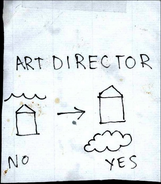
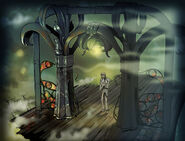
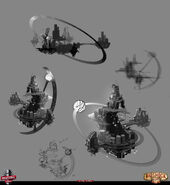

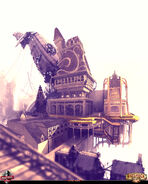
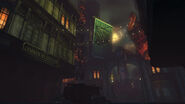

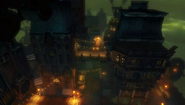

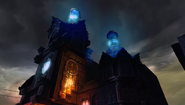
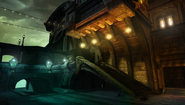
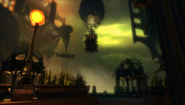
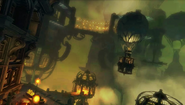
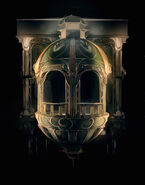
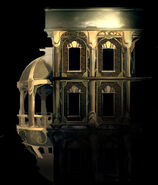
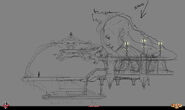
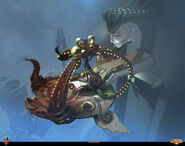
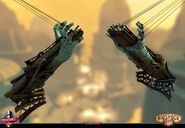
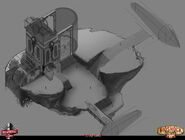

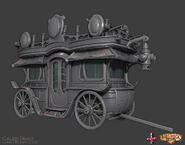

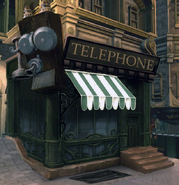
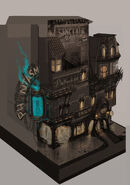

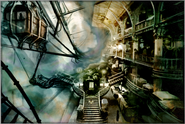
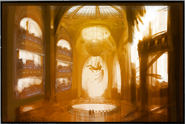
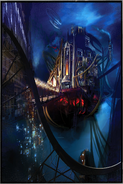
![Unused Carson Mansion-Inspired Facade 1.jpg (96 KB) An unused building facade, inspired by the Carson Mansion.[4]](https://static.wikia.nocookie.net/bioshock/images/2/2a/Unused_Carson_Mansion-Inspired_Facade_1.jpg/revision/latest/scale-to-width-down/185?cb=20181009204801)
![Unused Carson Mansion-Inspired Facade 2.jpg (238 KB) Part of the same unused Carson Mansion-inspired building.[4]](https://static.wikia.nocookie.net/bioshock/images/1/1f/Unused_Carson_Mansion-Inspired_Facade_2.jpg/revision/latest/scale-to-width-down/185?cb=20181009204811)
![Unused Philadelphia City Hall-Inspired Building Facade 1.jpg (66 KB) An unused building facade, based of the Philadelphia City Hall.[5]](https://static.wikia.nocookie.net/bioshock/images/e/ec/Unused_Philadelphia_City_Hall-Inspired_Building_Facade_1.jpg/revision/latest/scale-to-width-down/185?cb=20181009210424)
![Unused Philadelphia City Hall-Inspired Building Facade 2.jpg (98 KB) A close-up of the Philadelphia City Hall-inspired facade.[5]](https://static.wikia.nocookie.net/bioshock/images/0/06/Unused_Philadelphia_City_Hall-Inspired_Building_Facade_2.jpg/revision/latest/scale-to-width-down/185?cb=20181009210432)
![Unused Philadelphia City Hall-Inspired Building Facade 3.jpg (72 KB) Another unused Philadelphia City Hall-inspired facade.[5]](https://static.wikia.nocookie.net/bioshock/images/0/01/Unused_Philadelphia_City_Hall-Inspired_Building_Facade_3.jpg/revision/latest/scale-to-width-down/185?cb=20181009210442)
